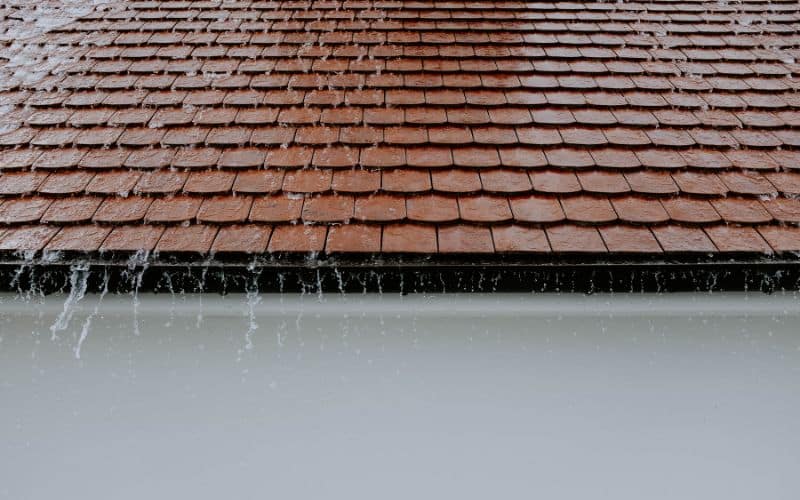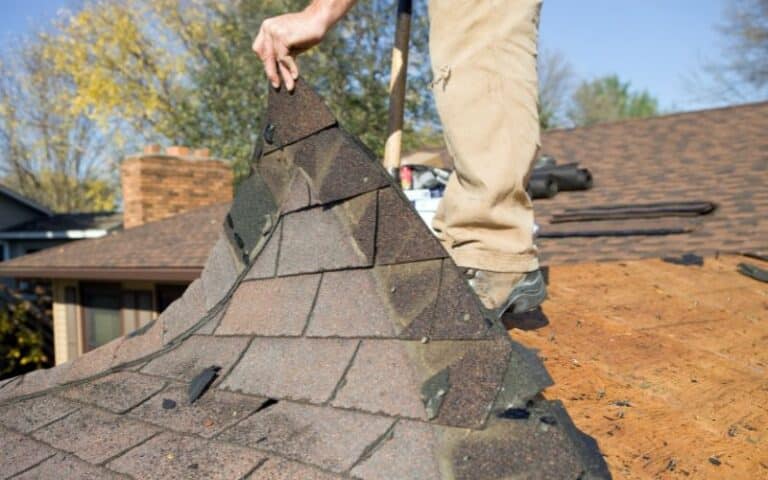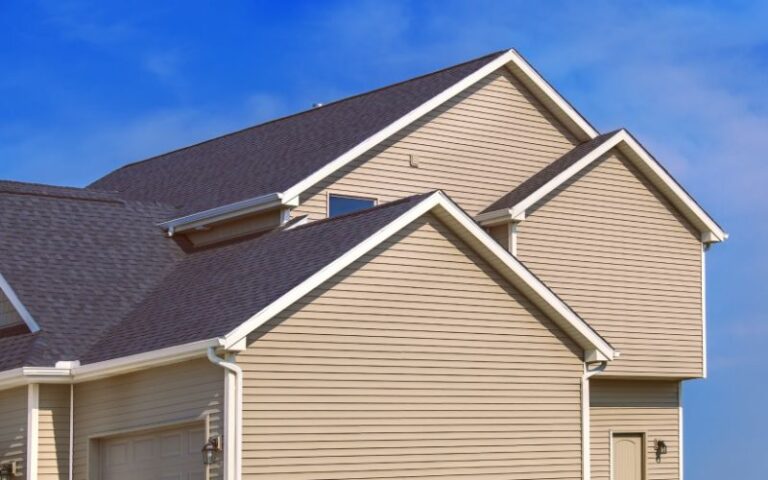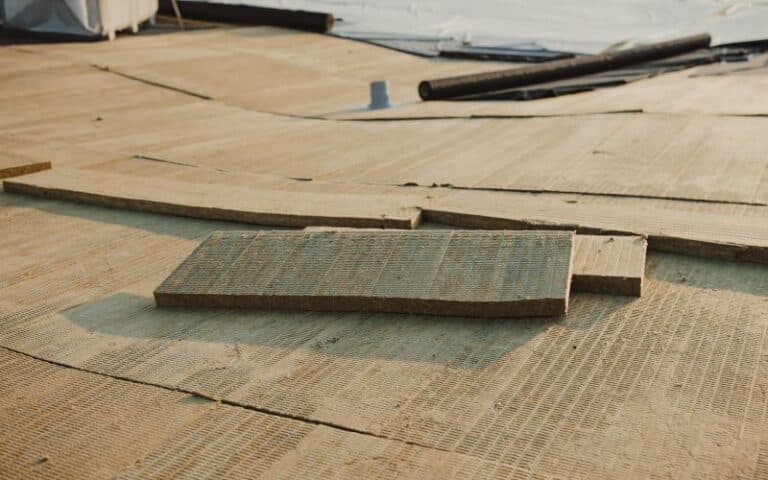Rain offers farmers a chance to cultivate good crops that will yield an increase and helps improve living in diverse life forms.
However, rain can also be disastrous, causing harm to homes and thus making life uncomfortable. Therefore, when it rains, some go rejoicing while others face difficulties.
Rain right after the new roof installation is disturbing, especially when it rains heavily. Roof shingles become moist and, therefore, do not stick any longer: the interaction of water with the sealants makes them lose grip.
Ready for a Roofing Quiz?
Is it Okay to Rain on a New Roof?

It’s devastating when it rains on a new roof. The reason is that newly installed roof shingles are fastened by sealants that don’t interact freely with water without being altered.
When it rains frequently, these adhesives deteriorate a great deal. Hence, the moisture loses the shingles, allowing water penetration in the loosened areas.
Fear grips homeowners when it rains right after a new roof installation. If the roof installation is done properly, homeowners ought not to be afraid of whether rain falls right after installation.
Most professional roof installers are sensitive to even the slightest drop of rain during roof installation.
If there’s rain underway or any signs of rain, they will reschedule the installation to another day. And perform the installation when the temperature conditions are favorable.
They won’t stop working until they become confident that your home is safe and secure.
What Happens if it Rains After a New Roof?
Your roof will gradually deteriorate after some time; the shingles will wear off, remove, or open.
Then there will be a water stain where you lost a shingle. That’s when you can see the real face of your problem.
Hefty storms and snow are among the traditional ways your roof can suffer harm. So even if rain comes down heavily on your new roof, you should live above that moment.
Go for options that will fix what you have left. Rather than relaxing, rain destroys the entire roofing system and your room’s upholstery in the extension.
It would be best if you got a professional to come and check the roof. To identify the areas that need a retouch rather than delay the situation from developing into a more complex one.
After installing your roof, do not get too comfortable with it but always check your roof at least annually.
Installing New Roof in Rain
Do not install roofs in the rain; roof installations must be done under dry conditions. Installing a new roof in the rain is the last thing you should do.
If it rains on a new roof, it will harm the roofing system. There will be little to save should you install your roof in the rain.
Installing roofs in the rain is a bad idea as it subjects your cottage to open rain damage. Below is a table comparing roofs in the rain to installing roofs under dry conditions.
Comparison
| Installation In Rain | Installation Under Dry Condition |
|---|---|
| Causes shingle damage | Improves adhesion of roof shingles |
| Hinders roof warranty | Has roof warranty |
| Expansion in roof material | Maintains material sizes |
| Brings about mold and rot | Clean and dry |
How does Rain Damage New Roofs?
Rain causes more harm than good to a new roof. If you sprinkle ordinary water on a newly installed roof, there will be a negative impact on the shingles; talk more of a downpour that falls with force.
The list below gives some of the damages rain causes.
#1. Shingle Damage
Roof Shingle damage is one of the apparent impacts of rain on a new roof. Rain washes away the adhesives that hold the roof shingles.
Immediately after the rain hits your new roof, I advise that you get a roofing contractor to have a professional inspection of your roof.
Check how stable your shingles rows are, and cover the cracks, holes, or leaks you may see with a sealant. Sealants are of great assistance here.
They mend up the leakages and offer enough adhesion to the loosened roof shingles.
Rain may be inevitable and unforeseen, you should ensure to maintain or avoid any further damages. At least do what you can before your roof leaks heavily.
#2. Mold And Rot
When the roof leaks, expect mold formation in your ceiling or any other moist roof. It won’t take time before mold grows between the holes or leaks and cracks of your roof.
Due to the increasing existence of mold, cracks or leaks will develop into large materials.
#3. Cracks and Leaks
Cracks and leaks in the previous sub-topic are mediums where mold can grow and eventually rot. Cracks and leaks affect the roof system beyond the tiny space they create.
The decay of building batteries occurs because of the water left in by the cracks and leaks. Therefore, you must check whether there are cracks or leaks on your roof without delay.
You can use the Liquid Rubber Color Waterproof Sealant to patch the leaks and cracks. There are many other good examples of sealants you can use.
#4. Internal Stains
Internal water stains indicate the existence of leaks, holes, and any space that must have allowed for water entry.
You know you are on a seat if they draw large maps on your ceiling. You can then judge the nature of the leak by how the internal stains appear.
By this judgment, some people forget about it when the stain appears only tiny.
How Bad is Rain for a New Roof?
Rain isn’t friendly with new roofs. Extreme precipitation presents a massive threat to the roof and the entire house.
Water penetrates the roof deck as the rain wears the shingles, and the whole house becomes susceptible to frost damage.
Some materials in your house, including wood, cotton, fabrics, and many others, will begin to moisten to the point of rotting.
Your ceiling will tend to have stains marked with map-like or round shapes; then, it will grow into a mold or start to rot and smell bad.
If you do nothing about it, even to this moment, the ceiling might no longer hold the water.
And it will begin to drip into your compartments, making them uninhabitable. In this condition, incessant rains will force you out of your cottage.
All because of what you could have easily avoided by contacting an experienced roof installer.
Conclusion
Owning a house puts you on the list of those with many responsibilities. There will always be things to repair or replace. However, one of the last things homeowners want is damage to the roof system.
Rain damages new roofs; it disrupts the adhesion of the shingles, thus making them loose and permeable.






